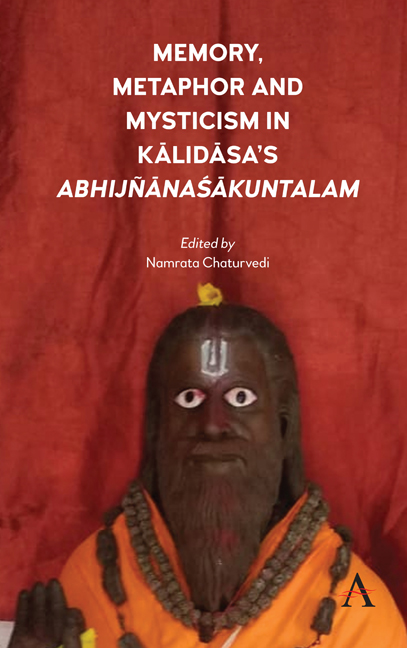Chapter 3 - From Separation to Unity: Resonances of KashmirŚaivism in AbhijñānaŚākuntalam
Published online by Cambridge University Press: 23 February 2022
Summary
‘There cannot be one road to the heart of so great amystery.’ These were the words spoken by the Romansenator Symmachus when pagan temples were beingmercilessly pulled down by early Christians. Thesewords come to mind when writing about Kālidāsa'sAbhijñānaŚākuntalam, a multifacetedmaster-piece lending itself to diverse anddiametrically opposite interpretations as a literarytext and to a whole variety of theatrical usesranging from Yakshagāna to Russian ballet.
T. S. Eliot (in ‘What Is a Classic’) identifies twoimportant characteristics of a classic: the maturityof manners and the maturity of idiom. In the wholeof Western literary tradition he could discover justone work that could fit this definition: Virgil'sAeneid. Even Homerand Shakespeare were denied the status of a classic.Frank Kermode (in T. S. EliotMemorial Lectures on The Classic) foundEliot's definition too imperialistic and gave a moreliberalist definition. According to him, a classicis characterized by patience with respect to time.Put another way, classics endure the changes oftime. We can add that classics also endure thechange of space for they travel freely from cultureto culture. Neither time nor space can fade theirinfinite beauty. Whichever of the above definitionsof the classic we choose, AbhijñānaŚākuntalam fits it. Amongother things, this play is about patience – abouthow the heroine endures the hard blows of theman-made world.
In the two classical traditions of India, neitherancient Tamil nor Sanskrit poetics consider art tobe the vehicle of any philosophy. Both of them agreethat art experience is non-ideological. Dhvani, the heart of poetry,is anything but philosophy – something which,according to Abhinavagupta, flashes forth in themind of the sahrdaya.It is also described as anuranana or resonance. Śākuntalam is an echochamber of innumerable resonances resonating witheach other and with something much morefundamental.
This chapter attempts to follow some of theseresonances through Śaiva symbols and pratyabhijñadarśana. Let usbegin with nāndiślokaas a convention of dramatic poetry.
When transmuted by the touch of a master, conventionstranscend their conventionality. For example, manyJaina kāvyas in Prākrit apply the technique ofbhavāvali ortracing the story through several incarnations ofthe characters.
- Type
- Chapter
- Information
- Publisher: Anthem PressPrint publication year: 2020

